Best Wood for Smoking Meat 2024
- September 22, 2023
- 6 comment
When it comes to elevating the flavor profile of your grilled or smoked delicacies, the choice of wood can make all the difference. Just as wines are paired with specific dishes to enhance the dining experience, different woods can be matched with various types of meat to accentuate flavors, aromas, and even colors. Let’s delve into the world of woods and explore which ones are the best for smoking your favorite meats.
Best Woods for Smoking Meat List:
The Science Behind the Smoke
It’s not just about the heat; it’s about the aroma. When wood burns, it releases compounds like lignin, cellulose, and various organic elements. These compounds interact with meat and give it that distinct smoky flavor. Different woods produce distinct flavors, making the choice of wood paramount.
1. Hickory: The Jack of All Meats
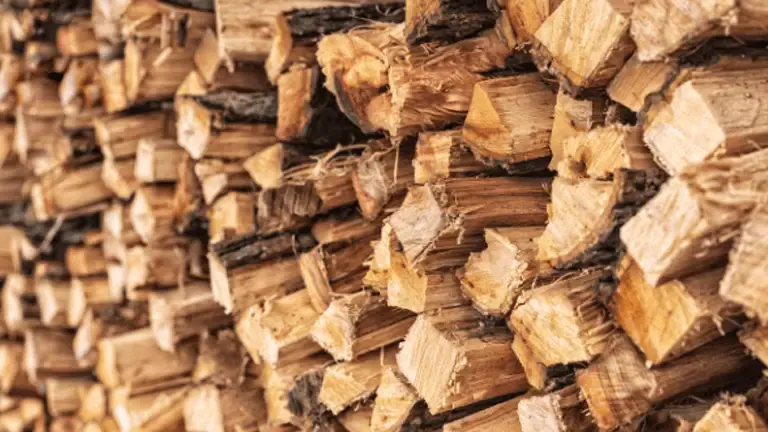
At the heart of classic American barbecuing lies a wood type that many grill masters swear by hickory. Its popularity isn’t unwarranted, as hickory wood manages to infuse a myriad of meats with its signature flavor, making it a versatile choice for a range of culinary applications.
Flavor Deep Dive
- Strength: Among various smoking woods, hickory stands out with its robust and assertive flavor profile. This strength means a little goes a long way, and it’s a favored choice for those looking to impart a genuine smoky taste to their dishes.
- Sweetness: Beneath its strong façade lies a sweeter undertone, which adds depth to the overall flavor. This sweet note is why hickory-smoked meats often don’t need an extra touch of sugary marinades or glazes.
- Bacon-likeness: A unique characteristic of hickory is its uncanny ability to evoke the flavors of bacon, a quality not many woods can claim. This bacon-like essence is especially pronounced when smoking pork, making ribs or pork shoulders smoked with hickory a truly unforgettable experience.
Optimal Meat Pairings
Hickory’s adaptability is one of its strong suits:
- Pork: Hickory and pork share a special bond. Whether you’re smoking ribs, pork butts, or even bacon, hickory ensures a flavor that’s rich and unforgettable.
- Chicken: For those wanting a deep, smoky flavor in their poultry, hickory is a prime choice. It infuses chicken with its signature taste, transforming a simple roast into a smoky delight.
- Beef: From briskets to steaks, hickory’s strong flavor profile complements the natural richness of beef.
- Wild Game: Hickory’s assertiveness can stand up to the often potent flavors of wild game, creating a harmonious blend that is both unique and delightful.
Tips for First-Timers
Hickory, while magnificent, can be a tad overpowering for those new to the smoking world. If you’re just dipping your toes into the art of smoking:
- Mix and Match: To balance its intensity, consider blending hickory with milder woods like apple or cherry. This combination will provide a more rounded flavor, with hickory’s strength complemented by the gentler aromas of other woods.
In essence, hickory is a stalwart in the world of smoking woods. Its unmatched versatility and rich flavor profile make it a favorite, both for seasoned pitmasters and casual grillers. Yet, as with any potent ingredient, it’s all about striking the right balance to achieve culinary perfection.
2. Mesquite: The Bold Southwestern Choice
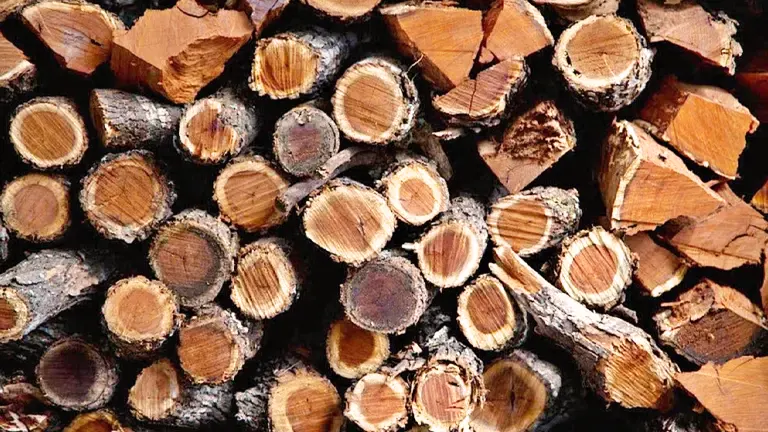
Originating from the sun-drenched terrains of the American Southwest and Northern Mexico, mesquite wood is more than just a smoking medium; it’s a piece of cultural heritage. Embedded in the culinary traditions of these regions, mesquite’s robust flavor embodies the spirit of the arid landscapes, transforming simple meats into Southwestern masterpieces.
Flavor Deep Dive
- Intensity: Mesquite doesn’t tiptoe around. When you choose this wood for smoking, you’re signing up for an unapologetically bold flavor experience. Its robust nature can dominate the flavor profile, which, when used judiciously, offers a gastronomic journey unlike any other.
- Earthiness: Rooted in its desert origins, mesquite brings an earthy touch to the table. This grounded flavor has a raw, almost primitive appeal, transporting you straight to the rugged terrains where this wood thrives.
- Slight Tang: Adding to its complexity, mesquite imparts a subtle tanginess to the smoked dishes. This unexpected twist complements the wood’s earthy tones, rounding off the flavor profile with a zesty punch.
Optimal Meat Pairings
While mesquite pairs well with a variety of meats, it truly shines with beef:
- Steaks: Imagine a thick cut of steak, seared perfectly, with the assertive smokiness of mesquite permeating every fiber. This wood accentuates the meaty richness of steaks, granting them a charred, rustic edge.
- Briskets: Slow-smoked brisket and mesquite are a match made in culinary heaven. The long smoking process allows the meat to absorb mesquite’s deep flavors gradually, resulting in a brisket that’s tender, juicy, and bursting with Southwestern charm.
Tips for the Uninitiated
Mesquite’s audacious flavor is a double-edged sword. For those not accustomed, or if not used correctly, it can overshadow the natural flavors of the meat. Here’s how to make the most of it:
- Monitor the Heat: Mesquite tends to burn hotter and faster than many other woods. This characteristic, while great for quick grilling, requires vigilance during prolonged smoking sessions to prevent overcooking or scorching.
- Blend with Caution: To tame its intensity, consider pairing mesquite with milder woods like oak or apple. This synergy can balance out Mesquite’s dominance, offering a more nuanced flavor experience.
In conclusion, mesquite isn’t just a wood—it’s a flavor adventure that encapsulates the spirit of the Southwest. While it demands respect and a bit of expertise, when harnessed correctly, it promises a smoky feast that’s both bold and memorable.
3. Applewood: The Subtle Sweetness
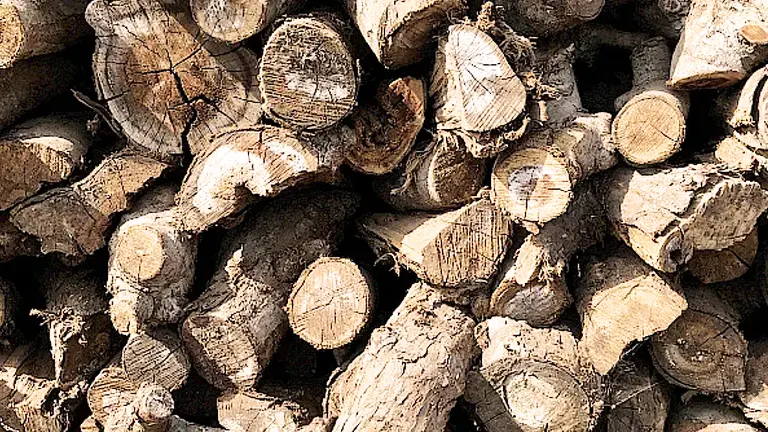
Hailing from the orchards where crisp apples flourish, applewood is a testament to nature’s gentle side. Unlike the overpowering smoke of some hardwoods, applewood whispers to the senses, enveloping meats in a delicate embrace of fruity sweetness. It’s this subtlety that has made applewood a cherished choice among smoke enthusiasts seeking a nuanced flavor experience.
Flavor Deep Dive
- Mildness: In the world of smoking woods, where many contenders vie for attention with strong flavors, applewood stands out with its restrained and gentle nature. This mildness ensures that the meat’s inherent flavors aren’t masked but rather subtly enhanced.
- Fruitiness: True to its origins, applewood infuses meats with a hint of fruitiness. This touch, while not overtly apple-like, brings a freshness to the smoked dishes, reminiscent of a serene orchard on a sunlit day.
- Slight Sweetness: Adding depth to its fruity undertones, applewood also introduces a whisper of sweetness. This gentle sugary note plays well with meats, especially those that benefit from a touch of caramelization.
Optimal Meat Pairings
Applewood’s gentle character makes it versatile for various meats:
- Poultry: Chicken and turkey, with their lighter meat profiles, are the perfect canvas for applewood’s subtle flavors. The wood accentuates the birds’ natural flavors without overpowering them.
- Pork: Whether it’s a tenderloin or succulent pork chops, the light sweetness of applewood complements the richness of the pork, creating a harmonious blend that dances on the palate.
- Seafood: Delicate meats like fish require a gentle touch, and applewood delivers just that. From salmon to trout, the wood’s mildness ensures the seafood’s natural flavors remain at the forefront, subtly enhanced by smoky sweetness.
Culinary Tips
While Applewood is fantastic on its own, a few tweaks can elevate the smoking experience:
- Herbal Fusion: Pairing applewood with aromatic herbs like rosemary not only intensifies the meat’s aroma but also adds another layer of flavor. The piney, slightly peppery notes of rosemary combined with applewood’s fruity sweetness create a tantalizing aroma that promises a feast for the senses.
In essence, applewood is a gentle giant in the realm of smoking woods. Its ability to add depth without dominance makes it a favorite among those seeking a balanced, sophisticated flavor profile. Whether you’re a seasoned pitmaster or a novice griller, applewood promises a culinary journey that’s both subtle and sublime.
4. Cherrywood: The Color Enhancer

From the blossoming cherry orchards emerges a wood that not only tantalizes the taste buds but also pleases the eyes. Cherrywood, with its distinctive flavor and color-enhancing qualities, is like the artist of the smoking world, painting meats with hues of mahogany while whispering tales of fruity sweetness.
Flavor Deep Dive
- Mildness: Cherrywood doesn’t shout; it serenades. Its mild character is a boon for those who seek a smoking experience that is discerning yet not overpowering. It adds a refined touch to the meats, allowing their natural flavors to shine through.
- Sweetness: Inheriting the essence of the cherries it once bore, this wood introduces a subtle sweetness to the smoked dishes. It’s a sweetness that is nuanced, neither too sugary nor too bland, striking the right chord every time.
- Fruity Undertones: Beyond its sweetness, cherrywood carries a hint of fruitiness that sets it apart. This fruit-forward flavor profile, while not overt, adds a layer of complexity to the smoked meats, making every bite a culinary delight.
Optimal Meat Pairings
Cherrywood’s gentle nature makes it a match for various meats:
- Chicken: The lightness of chicken pairs harmoniously with cherrywood’s subtle flavors, resulting in a smoky dish yet retains the chicken’s inherent taste.
- Turkey: When smoked with cherrywood, turkey takes on a rich mahogany hue, making it not just a feast for the palate but also a visual treat. The wood’s mild sweetness complements the turkey’s flavors, ensuring a festive treat every time.
- Pork: Cherrywood and pork share a special bond. Whether it’s ribs or a pork shoulder, the wood’s fruity sweetness plays well with the meat’s richness, culminating in a taste that’s both robust and refined.
Culinary Tips
While cherrywood is delightful on its own, experimenting can lead to culinary wonders:
- Blend with Bolder Woods: For those seeking a more assertive smoke profile, combining cherrywood with stronger woods like hickory can be transformative. While hickory brings depth with its intense flavor, cherrywood balances it out with its sweetness. Plus, the resulting mahogany tint it lends to the meat is nothing short of spectacular.
In conclusion, cherrywood is the maestro of subtlety in the world of smoking woods. Its ability to enhance both flavor and color makes it an indispensable asset for every griller. Whether you’re hosting a lavish barbecue party or a quiet dinner, cherrywood promises to elevate your culinary creations to art.
5. Pecan: The Nutty Undertone

From the shade of the sprawling pecan trees that grace the southern United States comes a wood that’s a symphony of flavors. Pecan, though lesser known than some of its smoking wood counterparts, offers a distinct taste profile that combines richness, nuttiness, and a touch of sweetness. It’s like the sophisticated cousin in the wood family, bringing a touch of elegance to the smoking process.
Flavor Deep Dive
- Richness: Pecan wood introduces a depth of flavor that is both pronounced and refined. It’s not just about the smoke; it’s about adding a layer of complexity to the meat, making every bite a richer experience.
- Nutty Nuances: As the name suggests, pecan wood imparts a delightful nutty undertone to the smoked dishes. This unique flavor is reminiscent of the delicious pecan nuts from which the wood is sourced, offering a taste that’s both familiar and refreshingly different.
- Subtle Sweetness: Alongside its rich and nutty attributes, pecan wood also brings a subtle sweetness to the table. This gentle sugary touch ensures that the smoked meats have a well-rounded flavor profile, striking a balance between savory and sweet.
Optimal Meat Pairings
Pecan’s diverse flavor profile makes it a versatile choice for various dishes:
- Pork: The richness of pecan complements the fatty goodness of pork, be it ribs, chops, or pulled pork. The resulting dish is a delightful melding of savory and sweet, with that signature nutty touch.
- Chicken: Poultry, with its relatively milder flavor, becomes a canvas for pecan’s nuanced taste. The wood enhances the chicken’s natural flavors while adding its own signature touch, ensuring a dish that’s both comforting and gourmet.
- Cheese: A slightly unconventional but delightful pairing is cheese smoked with pecan wood. The wood’s sweetness and nuttiness enhance the flavors of cheeses, making for a gourmet treat that’s perfect for cheese boards or upscale appetizers.
Culinary Tips
To harness the full potential of pecan, a few tips can come in handy:
- Pecan & Hickory Fusion: Pecan can be thought of as the gentler sibling of hickory. By blending the two, one can achieve a nuanced flavor experience that combines hickory’s robustness with pecan’s subtlety. This mixture is especially great for those who love hickory’s flavor but seek a milder version.
In essence, pecan wood is a hidden gem in the realm of smoking. Its unique flavor profile, combining richness, nuttiness, and sweetness, promises a culinary journey that’s both sophisticated and delightful. Whether you’re a seasoned smoker or just starting out, pecan invites you to explore a world of flavors that’s truly one of a kind.
6. Oak: The Reliable Backbone
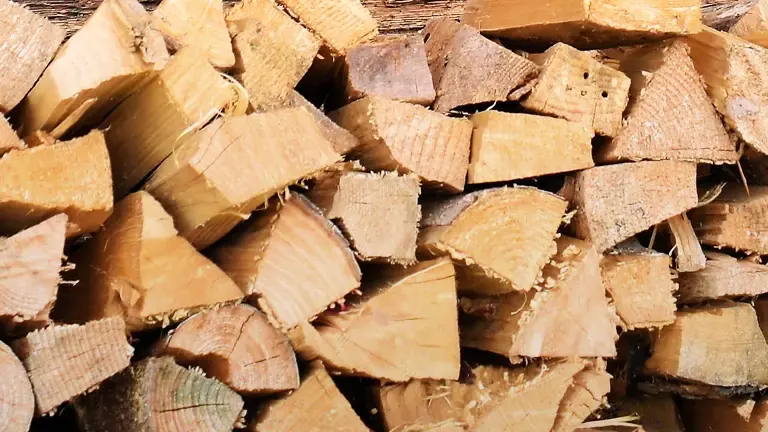
When one thinks of the stately and majestic oak trees, words like ‘sturdy’ and ‘enduring’ come to mind. Similarly, in the world of smoking woods, oak stands as a reliable pillar. Neither too aggressive nor too mild, oak offers a consistent and dependable flavor profile, making it a staple for many smoking aficionados.
Flavor Deep Dive
- Medium-Strong Impact: Oak occupies a middle ground when it comes to intensity. It’s robust enough to make its presence felt, yet not so overpowering that it overshadows the meat’s natural flavors. This balanced strength ensures a smoke that’s rich and flavorful without being overbearing.
- Versatility: One of oak’s defining characteristics is its adaptability. It complements a range of meats, from the robustness of beef to the delicacy of poultry, enhancing each with its signature touch.
- Subtle Sweetness: Beneath its sturdy flavor profile, oak introduces a hint of sweetness. This light sugary undertone adds depth to the smoked dishes, rounding off the flavor profile and ensuring a harmonious taste.
Optimal Meat Pairings
Given its versatile nature, oak pairs well with various meats, but it truly shines with:
- Beef: The rich and hearty flavors of beef, whether it’s a juicy steak or a slow-cooked brisket, find a perfect partner in oak. The wood’s medium-strong intensity complements the beef’s robustness, resulting in a deeply flavorful dish.
- Lamb: Lamb, with its slightly gamey flavor, benefits from oak’s balanced smoke. The wood’s subtle sweetness plays well with the meat’s richness, ensuring a dish that’s both savory and slightly sweet.
Culinary Tips
To elevate the smoking experience with oak, consider the following:
- Mixing Mastery: Thanks to its balanced flavor profile, oak serves as an excellent base for mixing with other woods. Pairing it with a milder wood, like applewood or cherrywood, can add nuances to the flavor. Conversely, combining oak with a stronger wood, like hickory or mesquite, can intensify the smoky experience.
In conclusion, oak stands as the bedrock in the world of smoking woods. Its reliability, combined with its balanced flavor profile, makes it an indispensable choice for both novices and seasoned grill masters. Whether you’re looking for a dependable solo smoke or a base for wood-blending experiments, oak promises to deliver consistently exceptional results.
7. Alder: The Seafood Specialist
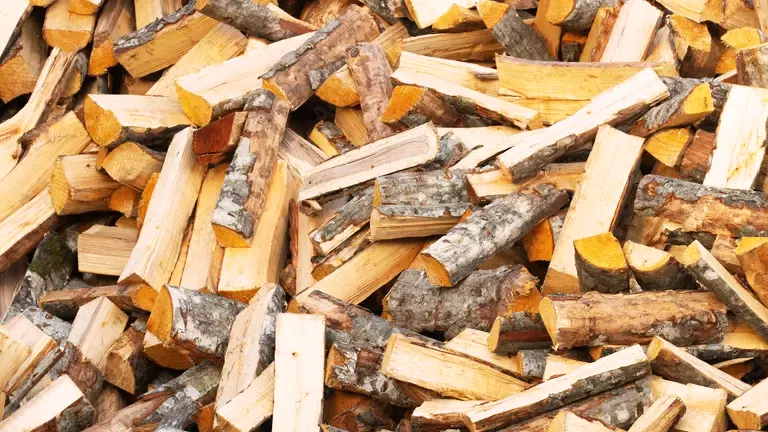
Alder, a wood steeped in the traditions of the Pacific Northwest, brings with it an aura of misty coastlines and pristine waters. Unlike some of the more aggressive smoking woods, alder speaks in gentle tones, making it the preferred choice for delicate meats like fish. In particular, its bond with salmon is legendary, a relationship that’s been nurtured over centuries and stands as a testament to culinary harmony.
Flavor Deep Dive
- Light Touch: Alder doesn’t impose; it graces. Its smoking profile is light, ensuring that it doesn’t overwhelm the natural flavors of the meat. This delicate touch is especially vital for seafood, which can easily be overshadowed by stronger woods.
- Delicacy: Inherent in Alder’s character is a finesse that’s hard to find in other smoking woods. It wraps the meat in a gentle embrace, adding subtle layers of flavor without overpowering it.
- Hint of Sweetness: Complementing its light and delicate nature, alder introduces a slight sweetness to the smoked dishes. This understated sugary note plays beautifully with the brininess of seafood, creating a balance that’s both tantalizing and refreshing.
Optimal Meat Pairings
While alder is versatile, it truly excels with certain meats:
- Fish: Alder’s claim to fame in the smoking world is its pairing with fish, especially salmon. The wood’s delicate flavor complements the fatty richness of salmon, resulting in a dish that’s smoky, slightly sweet, and utterly delicious.
- Light Meats: Meats like poultry or even rabbit, which have a milder flavor profile, benefit from alder’s gentle touch. The wood enhances the meat’s natural flavors while introducing its signature delicate smokiness.
Culinary Tips
For those looking to make the most of alder, consider the following:
- A Tradition Worth Following: Indigenous to the Pacific Northwest, alder has been the wood of choice for smoking salmon among the region’s indigenous communities for centuries. This traditional method involves slow-smoking the fish over alder wood, resulting in salmon that’s flavorful, moist, and steeped in history.
In conclusion, alder is the poet of the smoking woods—expressive in its subtlety and profound in its delicacy. Whether you’re a seafood lover or just someone seeking a milder smoking experience, alder invites you on a culinary journey that’s as refreshing as a breeze from the Pacific Northwest coastlines.
8. Maple: The Gentle Caress
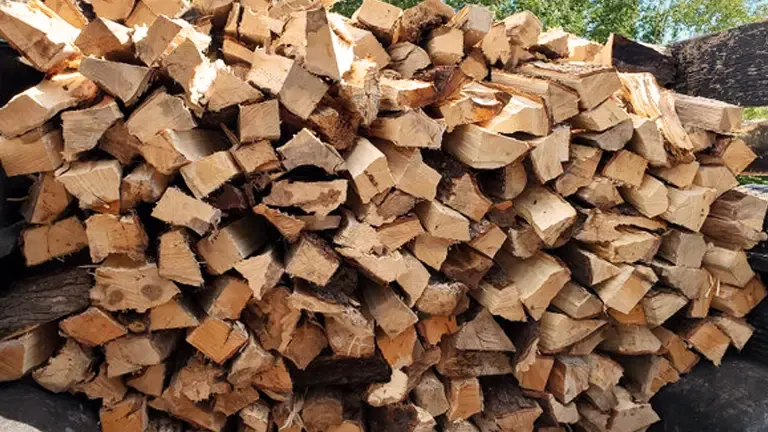
From the serene forests where golden leaves drift down every autumn comes maple, a wood that reflects the beauty and grace of its origins. As a smoking wood, maple doesn’t dominate or overwhelm; instead, it caresses the senses with its mildness, reminiscent of the gentle touch of its namesake’s leaves on a cool fall day.
Flavor Deep Dive
- Mild Musing: Maple’s smoking profile is characterized by its restraint. It’s a wood that believes in subtlety, making it perfect for those who desire a touch of smokiness without overshadowing the main dish.
- Subtle Sweetness: True to its lineage, which gives us the delightful maple syrup, this wood offers a hint of sweetness when used for smoking. It’s a sweetness that’s nuanced, ensuring the smoked dish has depth without becoming overtly sugary.
- Smoky Whispers: Beyond its sweetness, maple brings a gentle smoky note to the plate. This smokiness is neither too strong nor too faint, striking the perfect balance that enhances the flavors of the meat or vegetable being smoked.
Optimal Meat Pairings
Maple’s mild and sweet profile makes it an ideal choice for various dishes:
- Pork: Pork, with its inherent fatty richness, finds a harmonious partner in maple. The wood’s sweetness plays off the savory notes of the meat, creating a balanced and delightful flavor experience. This pairing is particularly evident in maple wood-smoked bacon, where the wood’s attributes shine through in every crispy bite.
- Poultry: For meats like chicken and turkey, maple offers a gentle smokiness that enhances without overpowering. The end result is poultry that retains its natural flavors, complemented by the wood’s subtle sweetness and smokiness.
- Vegetables: Not just for meats, maple also pairs beautifully with vegetables. Whether it’s bell peppers, zucchinis, or eggplants, smoking them with maple introduces a hint of sweetness and smokiness, transforming ordinary veggies into gourmet treats.
Culinary Tips
To truly savor the essence of maple, consider the following:
- Breakfast Bliss: Maple wood-smoked bacon is not just a dish; it’s an experience. Smoking bacon with maple wood takes this breakfast staple to new heights, making it a treat that’s perfect for lazy Sunday mornings or special brunches.
In conclusion, maple stands as a testament to the beauty of subtlety. Its gentle approach to smoking ensures dishes that are flavorful yet balanced. Whether you’re looking to elevate your breakfast bacon or give your veggies a gourmet twist, maple promises a culinary touch that’s as graceful as an autumn leaf’s descent.
Things to Consider
1. Seasoned vs. Green Wood
- Understanding the Basics: The primary difference between seasoned and green wood lies in its moisture content. Seasoned wood has been allowed to dry over time, reducing its inherent moisture, whereas green wood is relatively fresh, retaining much of its natural moisture.
- Why Seasoned Wood? Opting for seasoned wood is crucial for several reasons. Firstly, it burns hotter and cleaner than its green counterpart. This ensures an efficient combustion process, resulting in a clear, aromatic smoke that infuses your meat with the desired flavors. On the other hand, green wood, due to its higher moisture content, tends to smolder rather than burn cleanly. This can lead to the production of soot and the release of unpleasant, acrid flavors that can mar the taste of your smoked dishes.
2. Chips vs. Chunks
- The Case for Chips: Wood chips are thin, small pieces of wood that ignite and produce smoke quickly. Given their size, they also burn out faster. This makes them ideal for shorter smoking sessions where you want to infuse flavor without a prolonged cooking time. Think of dishes like steaks or fish fillets that don’t need hours on the grill.
- Championing Chunks: Wood chunks are substantially larger than chips and offer a more extended, consistent smoking experience. Their size allows them to smolder over longer periods, making them perfect for dishes that require prolonged smoking, such as briskets or pork shoulders. With chunks, you get a steady stream of smoke that ensures a deep, consistent flavor infusion.
3. Sourcing
- Locality Matters: Sourcing wood locally isn’t just about supporting local businesses; it’s also about freshness and quality. Local woods haven’t traveled long distances, reducing the chances of them being exposed to pests or contaminants.
- Trustworthiness of Suppliers: Not all woods are created equal, and not all suppliers adhere to the same standards. Some woods may be treated with chemicals to enhance their appearance or longevity. When burned, these chemicals can release harmful toxins that can contaminate your food. By choosing trusted suppliers, you ensure that the wood you use is free from any treatments or chemicals that might compromise the safety and flavor of your smoked dishes.
Conclusion
From the powerful punch of mesquite to the delicate whisper of alder, there’s a world of flavor waiting for you in those logs, chunks, and chips. The key is to experiment, mix and match, and find what tantalizes your taste buds. Happy smoking, culinary adventurers!
Looking for top-quality firewood? Explore our curated list Here!
FAQs
- Why do different woods produce different flavors when smoking meat?
Different woods have unique compounds, oils, and resins that influence their flavor profiles. As these compounds are released during the smoking process, they interact with the meat, infusing it with distinct aromas and tastes. - Can you mix different smoking woods together?
Absolutely! Many pitmasters blend woods to achieve nuanced flavors. For instance, a mix of hickory and applewood can offer a balance between strong smokiness and sweet undertones. - How does the region or terroir affect the flavor profile of smoking wood?
Just as grapes take on flavors from their growing region in wine-making, trees too can absorb distinct mineral and flavor profiles from the soil and environment. A maple tree from Vermont might have a slightly different profile than one from Oregon. - Is there a risk of using treated or painted wood for smoking?
Yes, there’s a significant risk. Treated or painted wood can release harmful chemicals when burned. Always ensure the wood you’re using is natural and untreated. - How do fruit woods, like apple or cherry, differ in flavor from nut woods, like pecan or hickory?
Fruit woods generally offer a milder, sweeter, and fruitier flavor, ideal for poultry or fish. Nut woods, on the other hand, are typically richer and more robust, making them suitable for red meats. - Why is salmon traditionally smoked with alder in the Pacific Northwest?
Alder is indigenous to the Pacific Northwest and has been used by native communities for centuries. Its mild flavor profile complements the fatty richness of salmon without overpowering it. - How does the age of the wood affect the smoking process?
Seasoned or aged wood, which is drier, burns hotter and cleaner, producing a better smoke for flavoring meats. Green or fresh wood can lead to cooler temperatures and produce more creosote, which can impart a bitter taste. - Are there any “exotic” woods that can be used for smoking, and how do they differ from more traditional choices?
Yes, woods like olive, grapevine, or even coconut shells are used in some cultures. These woods offer unique flavors, often influenced by the fruits or nuts they once bore. - Does the cut of meat determine the type of wood that should be used?
While there’s no strict rule, certain cuts with more fat or stronger flavors might pair better with robust woods, whereas delicate cuts often benefit from milder woods. - How can one ensure they’re sourcing sustainable and eco-friendly smoking woods?
Look for certifications or labels indicating sustainable practices. You can also source locally or buy from reputable suppliers committed to reforestation and sustainable harvesting.
As we wrap up our deep dive into the best woods for smoking meat in 2024, we’re reminded that the art of smoking is as much about personal taste as it is about tradition and technique. The woods we’ve explored offer a world of flavors, from the robust embrace of hickory to the gentle caress of maple. But, as every pitmaster knows, the true magic lies in the experimentation and the shared stories around the smoky grill.
So, dear readers, as you embark on your culinary adventures, we’re eager to hear from you. What are your go-to woods? Have you discovered a blend that’s too good to keep a secret? Or perhaps you’ve ventured into using an exotic wood we haven’t covered? Light up the comment section with your experiences, tips, and smoky tales. After all, the joy of grilling is best savored when shared. Happy smoking, and here’s to flavorful memories waiting to be made in 2024!

David Murray
Forestry AuthorI'm David Murry, a forestry equipment specialist with a focus on chainsaw operation. With over 13 years of experience, I've honed my skills in operating and maintaining a wide range of machinery, from chainsaws to log splitters. My passion for the outdoors and commitment to sustainable forestry drive my work, which emphasizes safety, efficiency, and staying updated with industry advancements. Additionally, I'm dedicated to sharing my expertise and promoting environmental awareness within the forestry community.
6 comments
The smoke is carcinogenic. Red meat is carcinogenic. Smoked meats are carcinogenic. Dumb article. No one should be allowed to smoke meats in the suburbs due to air pollution concerns, just as all solid fuel burning should be banned. Firewood sellers should be financially responsible for the deaths and diseases the wood they sell causes.
Ralph Malph
September 25, 2023 6:35 amDeliberate smoke? You have got to be kidding it is full of carcinogens. “Every single disease that is non-communicable is impacted by air pollution. It is not only involved in worsening diseases but in causing them, and new diseases that would not otherwise occur are happening because of air pollution” – Sir Stephen Holgate, National Clean Air Conference Nov. 20/21
Clive Stott
September 23, 2023 7:26 amGet a life
Laird
September 28, 2023 12:50 amGet a life
Laird
September 28, 2023 12:50 amGet a life













It should be illegal... lmao. Shut your ac off. Turn off all of your electronics for good. Only ride a bicycle. Candles also use resources. In the winter you can just use piles of recycled paper. No vacations. I mean, one plane ride is worse than 200 life times of barbecuing. It's funny how the people who believe these things are destorying the planet live, in cesspools with zero nature half the time. Hunting and gathering is going to be a huge life change I'd imagine....If you're in the suburbs, well that alone is basically murder.
actualperson
February 21, 2024 7:26 am